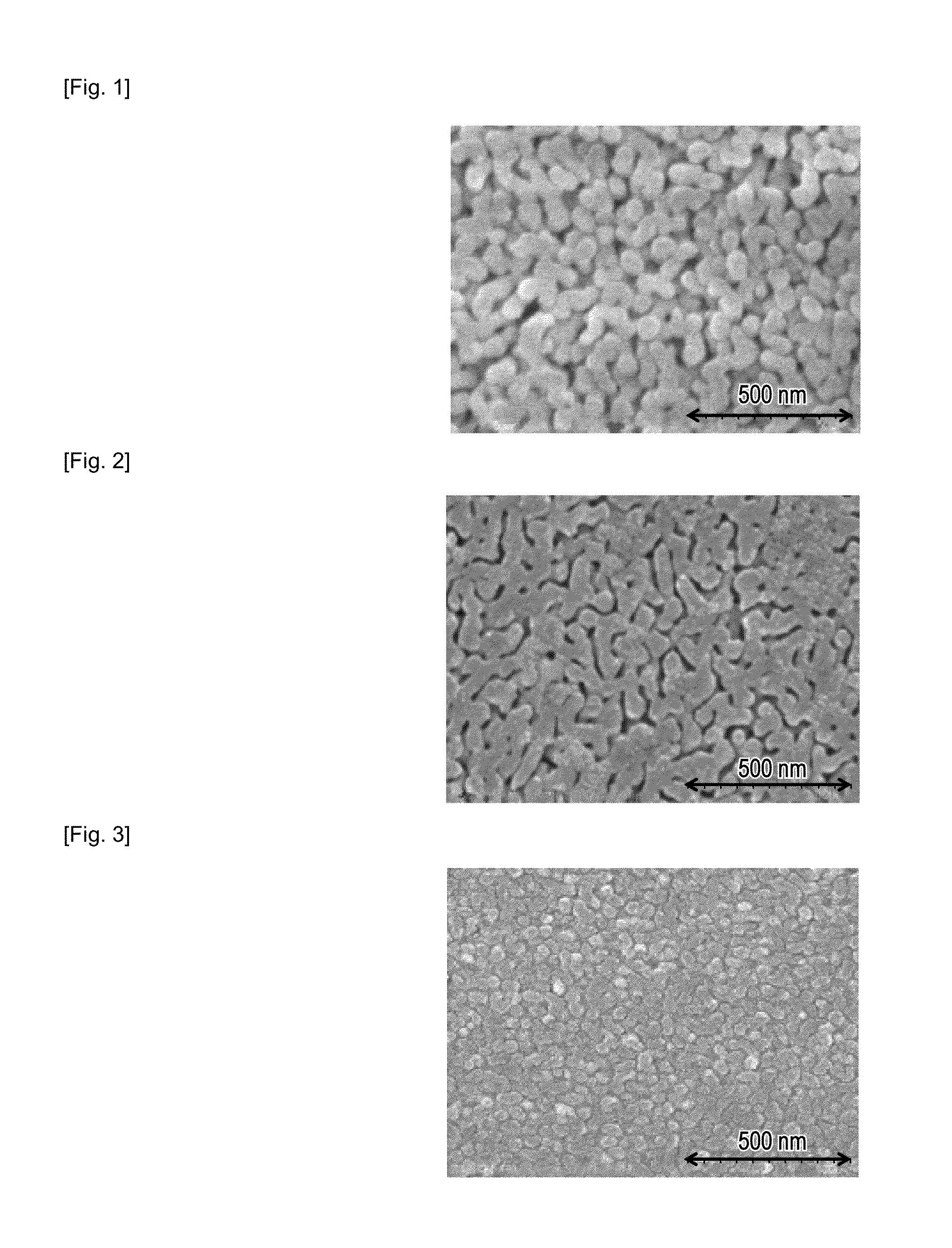Method for manufacturing porous glass, and method for manufacturing optical element
a manufacturing method and optical element technology, applied in the field of manufacturing methods for porous glass and manufacturing methods for optical elements, can solve problems such as difficulty in controlling the pore diameter by heat treatmen
- Summary
- Abstract
- Description
- Claims
- Application Information
AI Technical Summary
Benefits of technology
Problems solved by technology
Method used
Image
Examples
example 1
[0047]As a glass raw material, silicon dioxide, boric acid, sodium carbonate, lithium carbonate, and potassium carbonate were used, and after these components were uniformly mixed together at a composition ratio: SiO2:B2O3:Na2O:Li2O:K2O=64.2:28.5:4.2:2.3:0.8 (percent by weight), heat melting was performed at 1,400 degrees Celsius. Subsequently, in the state in which the above mixture was formed into a plate, spontaneous cooling was performed, so that a phase-separable glass body in the form of a plate having a thickness of approximately 1 mm was obtained. No phase separation occurred in this state, and a phenomenon, such as devitrification, was also not observed.
[0048]A Heat treatment was performed for the plate-shaped phase-separable glass body at each temperature of 300, 400, and 500 degrees Celsius for 50 hours. Subsequently, the glass body thus processed was placed in a nitric acid solution at a concentration of 1 mol / L (1 N) and was then held at 80 degrees Celsius for 24 hours....
example 2
[0050]As a glass raw material, silicon dioxide, boric acid, sodium carbonate, lithium carbonate, and potassium carbonate were used, and after these components were uniformly mixed together at a composition ratio: SiO2: B2O3:Na2O: Li2O: K2O=63.9:28.3:3.2:2.3:2.3 (percent by weight), heat melting was performed at 1,400 degrees Celsius. Subsequently, in the state in which the above mixture was formed into a plate, spontaneous cooling was performed, so that a phase-separable glass body in the form of a plate having a thickness of approximately 1 mm was obtained. As in the case of Example 1, no phase separation occurred, and a phenomenon, such as devitrification, was also not observed.
[0051]The following treatment was performed in a manner similar to that of Example 1, and porous glasses 2A, 2B, and 2C were obtained.
[0052]The surface of the glass thus obtained was observed using an electron microscope. A photograph of the surface of the porous glass 2B which was heat-treated at 400 degre...
example 3
[0053]As a glass raw material, silicon dioxide, boric acid, sodium carbonate, lithium carbonate, and potassium carbonate were used, and after these components were uniformly mixed together at a composition ratio: SiO2:B2O3:Na2O:Li2O:K2O=64.1:28.4:3.7:2.3:1.5 (percent by weight), heat melting was performed at 1,400 degrees Celsius. Subsequently, in the state in which the above mixture was formed into a plate, spontaneous cooling was performed, so that a phase-separable glass body in the form of a plate having a thickness of approximately 1 mm was obtained.
[0054]The following treatment was performed in a manner similar to that of Example 1, and porous glasses 3A, 3B, and 3C were obtained. According to the results of observation of the surface of the glass thus obtained using an electron microscope, development of the phase separation of each of the porous glasses 3A, 3 B, and 3C which were heat-treated at 300, 400, and 500 degrees Celsius, respectively, for 50 hours were confirmed.
PUM
| Property | Measurement | Unit |
|---|---|---|
| temperature | aaaaa | aaaaa |
| temperature | aaaaa | aaaaa |
| temperature | aaaaa | aaaaa |
Abstract
Description
Claims
Application Information
 Login to View More
Login to View More - R&D
- Intellectual Property
- Life Sciences
- Materials
- Tech Scout
- Unparalleled Data Quality
- Higher Quality Content
- 60% Fewer Hallucinations
Browse by: Latest US Patents, China's latest patents, Technical Efficacy Thesaurus, Application Domain, Technology Topic, Popular Technical Reports.
© 2025 PatSnap. All rights reserved.Legal|Privacy policy|Modern Slavery Act Transparency Statement|Sitemap|About US| Contact US: help@patsnap.com


